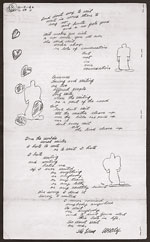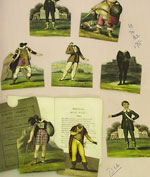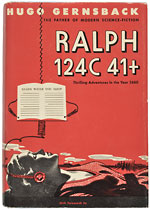Lonesome Dove
Letters from Woody Guthrie, Freemans, Philadelphia, $41,800
In 1945, Charlotte Strauss wrote to Woody Guthrie after reading his book Bound for Glory and Guthrie, then serving as a private in the armed forces, responded to what had apparently been a very sympathetic responses to his work. There began a short but warm, even intimate correspondence and Guthrie’s side of that exchange was revealed in an archive of letters which, along with a couple of manuscript and typescript short stories (‘I Spin, You Spin’ and ‘Study Butte’), some records and other ephemera, sold for a much higher than expected $41,800 in a January 15 sale held by Freemans of Philadelphia.
What the saleroom described as Guthrie’s “reverie-filled” letters offered a glimpse into his personal and professional life. In one letter he writes about his then wife, Marjorie, and her mother; in others he discusses the memories that Charlotte’s letters awaken, and in yet another, he reflects on their relationship and his response to the desert surrounding his Las Vegas base:
“The desert is so lonesome that she blows a cold air across her bosom. You have a way of making me want to [go?] down and buy more smokes and to set here in the window and look down across the barracks and write what crosses my mind.”
One letter of December 1945 includes eight pages of song lyrics and drawings and what appears to be the last letter of the correspondence, dated October 8, 1946, closes with three pages of lyrics and drawings of figures and hearts.
And if you are wondering if they ever met—well, it seems they did. David Bloom of Freemans, whose consignor was Charlotte’s brother, told a Philadelphia Enquirer reporter that before they met she went on a crash diet!
Albert Redressed
Children’s Cut Out Book, Brightwells, Leominster, £800
Roger Warner (1910-2008) opened an antiques shop in the lovely Cotswolds town of Burford in 1936 and traded there for over 50 years, building a national reputation for a good eye and straight. Christie’s London had the pick of Warner’s private museum, and held a $2.80 million sale of pictures, furnishings and works of art in mid-January, while the other material went to a series of sales at Brightwells of Leominster in Herefordshire.
Warner had a lifelong interest in anything to do with childhood (the London sale contained several examples of children’s posture chairs), so it’s not surprising that Warner should have collected early children’s books, toys and games. On February 4 these surfaced as the first of the country sales.
David Temperley, a dealer friend who specializes in this area, told me that in the early 1970s he’d joined the select company of those admitted to the holy of holies, Warner’s private museum. Even then, David said, he realized Warner was less discriminating about his juvenilia than about other things; but David could still recall a few exceptional items—35 years later.
One was a copy of Young Albert, The Roscious, printed in 1811 with the subtitle “exhibited in a series of characters from Shakespeare and other authors.”
This little work was beautifully shown on the catalogue cover (so I now regret having scribbled on it). I offer it here because it so well captures the appeal of these once highly popular little children’s tales, with their cut out figures and interchangeable costumes.
It had been a long wait, but Young Albert was finally secured by David Temperley, for £800 ($1,135).
Ralph the Robot
Classic Science Fiction, Dominic Winter, South Cerney, £800
Others’ claims may be equally valid (Jules Verne and H. G. Wells come quickly to mind) but inventor, writer and publisher Hugo Gernsback (1884-1967) was among those dubbed the father of science fiction. Gernsback founded the first sci-fi magazine, Amazing Stories , and there are, of course, those annual sci-fi awards known as the Hugos.
The multi-talented Gernsback was also a radio and TV pioneer. The story of his famed robot character, Ralph 124C 41, was first serialized in 1911 in Modern Electrics , a magazine Gernsback launched a few years after moving to the U.S. from his native Luxembourg. Set in the year 2660, this prophetic tale introduces radar and wireless power transmission (at one point Ralph saves the heroine’s life by directing energy remotely at an approaching avalanche), along with televised phone calls, tape recorders, solar energy, synthetic foods, artificial cloth, and of course space flight. All very big at the time.
A Dominic Winter sale of January 28 included this first edition of 124C 41 (a pun on “one to foresee, for one”) published in 1925 by the Stratford Company of Boston and illustrated by Frank R. Paul. One plate is now loose, the front hinges are breaking and there is some marginal toning, while the lower edge of the jacket is folded over and a little bit rubbed and creased. For all that, it remains a scarce title and sold at £800 ($1,135).








 Ian McKay’s weekly column in Antiques Trade Gazette has been running for more than 30 years.
Ian McKay’s weekly column in Antiques Trade Gazette has been running for more than 30 years.

